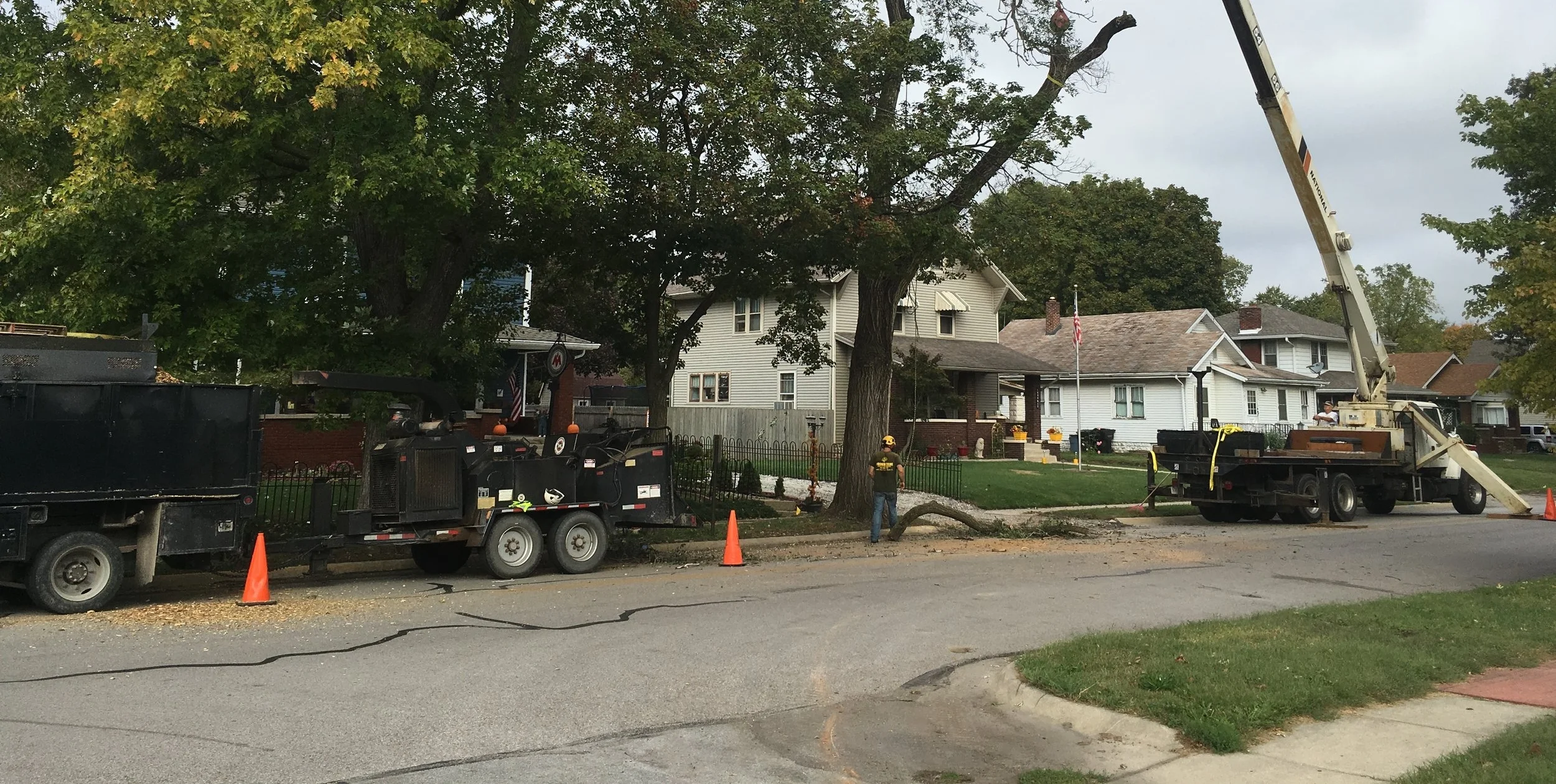How to Plant a Tree
/Early spring is an ideal time to plant new trees. Joshua always recommends that when removal is necessary, a new tree should be planted. Great care should be taken while planting new trees. You want to make sure to do things safely without damaging your tree's health.
Please follow these nine steps to help your tree establish quickly in its new location:
The trunk flare is where the trunk expands at the base of the tree. Ensure trunk flare is partially visible after the tree is planted. Remove excess soil prior to planting if flare is not visible.
Dig a shallow, broad planting hole. Holes should be 2–3 times wider than the root ball, but only as deep as the root ball.
If wrapped, remove any cover from around the root ball and trunk to facilitate root growth. Remove wire basket or cut one or two rings off so it is low-profile and will not interfere with future root growth. Inspect tree root ball for circling roots and straighten, cut, or remove them. Expose the trunk flare if necessary.
Place the tree at the proper height. When placing the tree in the hole, lift by the root ball, not the trunk. The majority of tree’s roots develop in the top 12 inches (30 cm) of soil. Planting too deep can be harmful to the tree.
Straighten the tree in the hole. Before filling the hole, have someone examine the tree from several angles to confirm it is straight.
Fill the hole gently but firmly. Pack soil around the base of the root ball to stabilize it. Fill the hole firmly to eliminate air pockets. Further reduce air pockets by watering periodically while backfilling. Avoid fertilizing at the time of planting.
If staking is necessary, three stakes or underground systems provide optimum support. Studies have shown that trees develop stronger trunks and roots if they are not staked; however, it may be required when planting bare root stock or on windy sites. Remove stakes after first year of growth.
Mulch the base of the tree. Place a 2–3 inch (5–7.5 cm) layer of mulch, but be sure not to pile much right against the trunk. A mulch-free area of 1–2 inches (2.5–5 cm) wide at the base of the tree will reduce moist bark and prevent decay.
Provide follow-up care. Keep the soil moist by watering at least once a week, barring rain, and more frequently during hot, windy weather. Continue until mid-fall, tapering off as lower temperatures require less-frequent watering.
Browning Tree Service employs Joshua Browning ISA certified arborist license #KY-9849A who is a proud member of Indiana Arborist Association and International Society of Arboriculture, serving the West Lafayette and Lafayette, Indiana area!
Note: Before you begin planting your tree, be sure you have located all underground utilities prior to digging. 811 is the US national call-before-you-dig phone number. Anyone who plans to dig should call 811 or go to their state 811 center’s website.
Resources:










